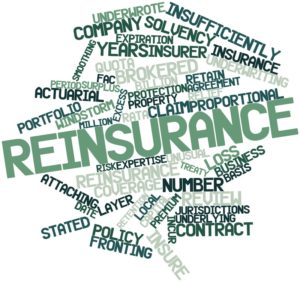No credit where credit is due

© Can Stock Photo / radiantskies
Reinsurance renewals for Florida insurance companies are winding to a close and as predicted, rates went up, sometimes significantly. Blame recent hurricanes Irma and Michael but also rising loss costs from Assignment of Benefits (AOB) abuse and growing litigation in general. Meanwhile, AIR Worldwide has published its open-source database to encourage reinsurers to greater utilize data and analytics in setting future rates.
In the May 20 newsletter, we talked about the shifting balance of power from reinsurance buyers to reinsurance sellers at this June renewal and the anticipated increases for carriers in Florida. Those have become a reality with reported increases from mid to upper single digits for some carriers, to 15%-20% increases for others. Rising reinsurance costs could pose a major hurdle for carriers writing in Florida, potentially diminishing their earnings and pushing them to look at alternatives, such as insurance-linked securities.
One reinsurer noted catastrophe loss-hit property rates for Florida rose between 5% and 25% in June and July renewals. Loss-free Florida rates were flat to up 7.5%. Some carriers have responded by placing up to 90% of their cedent insurance with the Florida Hurricane Catastrophe Fund and its more favorable reinsurance rates. Most trade articles carry predictions that rate increases will continue into the 2020 season, regardless of the severity of this current 2019 hurricane season. Loss creep from hurricanes Irma and Michael, together with rising losses and loss adjustment expenses (LAE) from AOB abuse and other litigation, are all cited as reasons for the reinsurance rate hikes.
What we said in May bears repeating: it appears the reinsurers are not giving “credit” for this spring’s legislative changes to ease AOB abuse and raise the LAE from 5% to 10% that the Florida Hurricane Catastrophe Fund reimburses to insurers. The Cat Fund is stepping up and absorbing more LAE coverage beginning in this current hurricane season. Yet again to Demotech’s point: reinsurers have so far failed to impose meaningful pricing differentials on Florida insurance companies.
AIR worldwide, the world’s leading natural catastrophe modeler, is trying to help. It recently published its Catastrophe Exposure Data Schema to the public. Its Catastrophe Exposure Data Exchange (CEDETM) is designed to facilitate accurate and transparent data exchange throughout the insurance value chain more efficiently, and to encourage additional analytics on a greater number of exposures.
“The (re)insurance industry is striving to introduce more efficiency into their catastrophe modeling workflows, and one way we can help is to facilitate transparency by providing a truly open and public exposure data schema,” said Bill Churney, president, AIR Worldwide, in a company statement.
LMA Newsletter of 7-15-19

